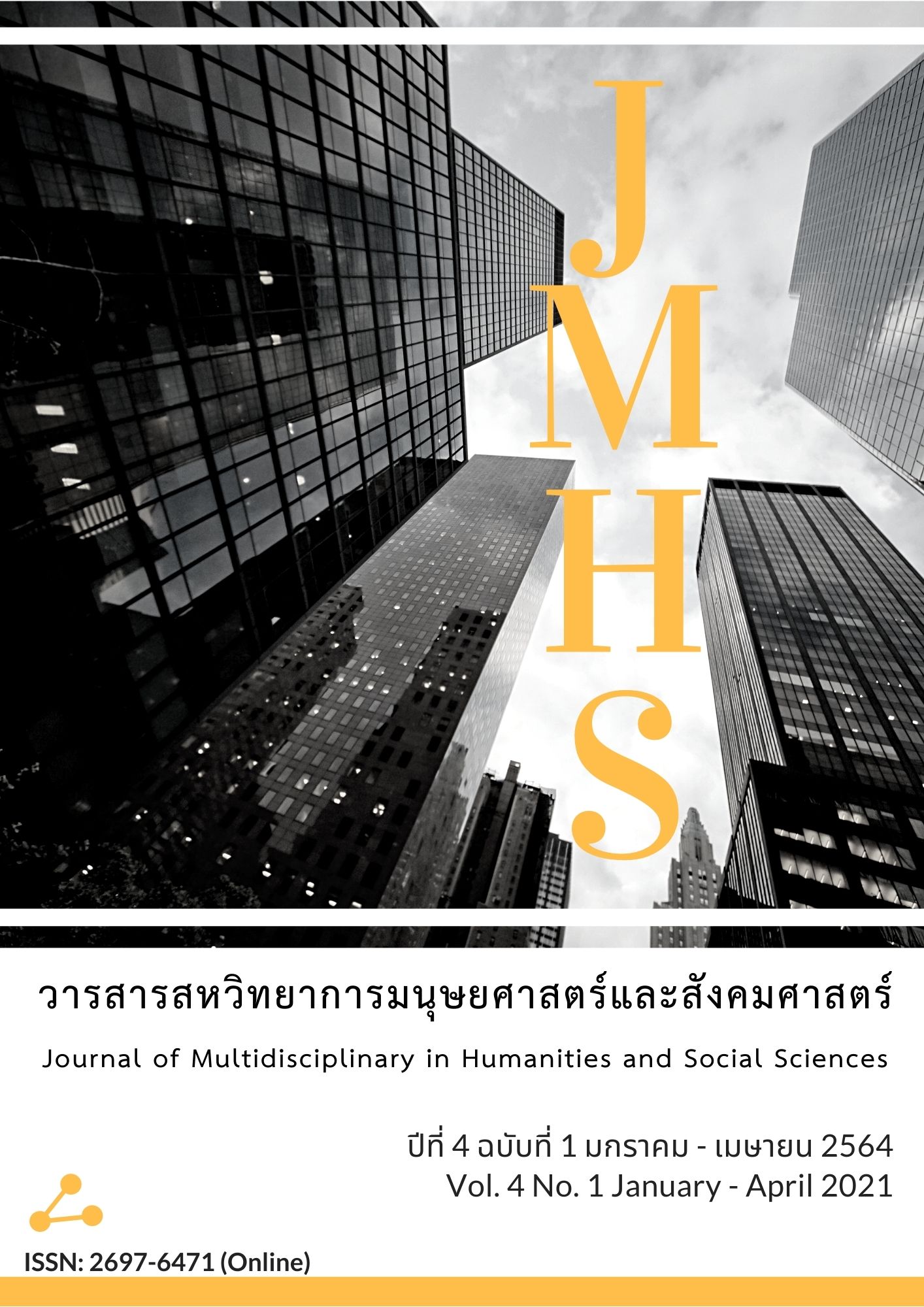An Analysis of the Ways to Abstain From Declination in Parabhava Sutta
Main Article Content
Abstract
The purposes of this study were to (1) explore the ways to abstain declination in the Buddhist scriptures; (2) explore the ways of declination found in Parabhavasutta; and (3) analyze the ways to abstain from declination found in Parabhavasutta. Data were analyzed using descriptive statistics and content analysis. The research results were found as follows: 1) The path of deterioration in the Buddhist scriptures states that it began with the mind that consisted of Akusaladhamma doctrine and then passed on the process of action - external expressed behavior caused by the internal causes expressed as the physical and verbal declination affecting the actors, and the victims, including the happening with the surrounding society; 2) The Lord Buddha has shown the path of decay in the Parabhavasutta implored by the angels who wished it to be a guideline for the human life. There were 12 things characterized the 3 causes of decay, i.e., deterioration caused by the body, by words and by the mind. With investigations and reflections, the disadvantages arisen from behaving the path of decay, ill-affected oneself, family, the workplace society, and the national society; and 3) The analytical results of the guidelines for an abstention in Parabhavasutta, could be concluded in 12 patterns and relying on 2 things, i.e. gradual abstinence, and radical abstinence and when people followed these paths of abstinence, they could create values or benefits in various levels, i.e., human values, social values and national value.
The findings from this research make it possible to figure out the pathways of degeneration and its consequences at different levels, and to find ways to stop the damage done in Prana. Including the receipt of products that arise from refraining from deterioration.
Article Details
Views and opinions appearing in the Journal it is the responsibility of the author of the article, and does not constitute the view and responsibility of the editorial team.
References
พระครูสมุทรวชิรานุวัตร และมนตรี วรภัทรทรัพย์. (2562). กุศโลบายที่ใช้ในการข่มใจ (ทมะ) ตามแนวพระพุทธศาสนา. วารสารมหาจุฬานาครทรรศน์, 6(9), 4230-4249.
พระพรหมคุณาภรณ์ (ป.อ.ปยุตฺโต). (2554). พจนานุกรมพุทธศาสน์ ฉบับประมวลศัพท์. (พิมพ์ครั้งที่ 16). กรุงเทพฯ: สำนักพิมพ์ผลิธัมม์.
พระพรหมคุณาภรณ์ (ป.อ.ปยุตฺโต). (2556). พจนานุกรมพุทธศาสตร์ ฉบับประมวลธรรม. (พิมพ์ครั้งที่ 25). กรุงเทพฯ: สำนักพิมพ์ผลิธัมม์.
วันชัย ปานจันทร์. (2560). ภาวะผู้นำในองค์การ. กรุงเทพฯ: สำนักพิมพ์มหาวิทยาลัยรามคำแหง.
วิโรจ นาคชาตรี. (2561). พระพุทธศาสนากับความมั่นคงของชาติ. กรุงเทพฯ: สำนักพิมพ์มหาวิทยาลัยรามคำแหง.
มหาจุฬาลงกรณราชวิทยาลัย. (2535). พระไตรปิฎกภาษาบาลี ฉบับมหาจุฬาเตปิฏกํ 2500. กรุงเทพฯ: โรงพิมพ์มหาจุฬาลงกรณราชวิทยาลัย.
มหาจุฬาลงกรณราชวิทยาลัย. (2539). พระไตรปิฎกภาษาไทย ฉบับมหาจุฬาลงกรณราชวิทยาลัย. กรุงเทพฯ: โรงพิมพ์มหาจุฬาลงกรณราชวิทยาลัย.
มหาจุฬาลงกรณราชวิทยาลัย. (2557). อรรถกถาภาษาไทย ฉบับมหาจุฬาลงกรณราชวิทยาลัย. กรุงเทพฯ: โรงพิมพ์มหาจุฬาลงกรณราชวิทยาลัย.
มหาจุฬาลงกรณราชวิทยาลัย. (2559). พระอภิธรรมปิฏก. กรุงเทพฯ: โรงพิมพ์มหาจุฬาลงกรณราชวิทยาลัย.
สำนักงานพระพุทธศาสนาแห่งชาติ. (2550). พุทธธรรมเพื่อส่งเสริมเศรษฐกิจ. กรุงเทพฯ: โรงพิมพ์สำนักงานพระพุทธศาสนาแห่งชาติ.


